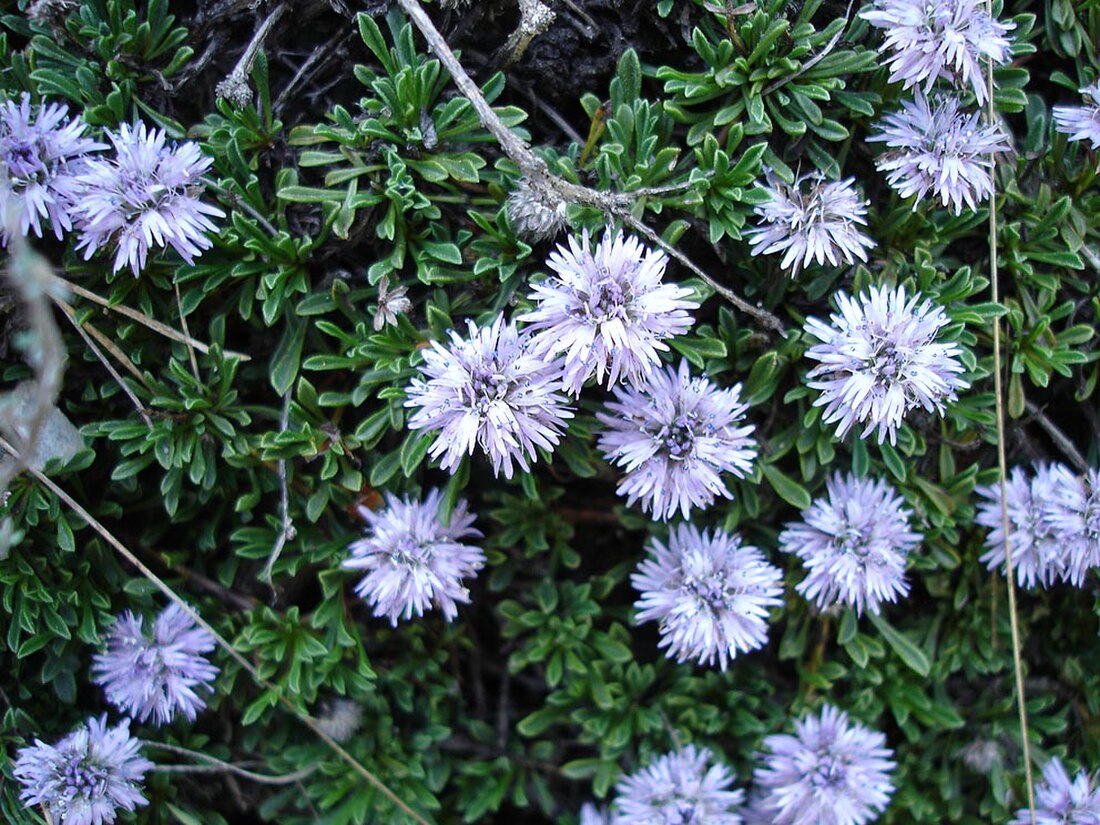Globularia is a genus of about 22 species of flowering plants in the family Plantaginaceae,[1] native to central and southern Europe, Macaronesia, northwest Africa and southwest Asia. They are dense low evergreen mat-forming perennials or subshrubs, with leathery oval leaves 1–10 cm long. The flowers are produced in dense inflorescences (capitula) held above the plant on a 1–30 cm tall stem; the capitula is 1–3 cm in diameter, with numerous tightly packed purple, violet, pink or white flowers.[2]
| Globularia | |
|---|---|
 | |
| Globularia repens | |
| Scientific classification | |
| Kingdom: | Plantae |
| Clade: | Tracheophytes |
| Clade: | Angiosperms |
| Clade: | Eudicots |
| Clade: | Asterids |
| Order: | Lamiales |
| Family: | Plantaginaceae |
| Tribe: | Globularieae |
| Genus: | Globularia L. |
| Species | |
|
See text | |
Globularia species are used as food plants by the larvae of some Lepidoptera species including Coleophora virgatella.
Several members of the genus, such as Globularia cordifolia and Globularia punctata, are cultivated and sold for garden use.
Under the old Cronquist system of plant classification, they were treated in their own family, Globulariaceae, but genetic evidence has shown that the genus belongs in the family Plantaginaceae.
Most species are known as globe daisies or globularias.
Species
Species include:
- Globularia alypum
- Globularia amygdalifolia
- Globularia ascanii
- Globularia bisnagarica
- Globularia cordifolia
- Globularia dumulosa
- Globularia greuteri[3]
- Globularia incanescens
- Globularia meridionalis
- Globularia nudicaulis
- Globularia orientalis
- Globularia repens
- Globularia salicina
- Globularia sarcophylla
- Globularia stygia
- Globularia trichosantha
- Globularia vulgaris
References
Wikiwand in your browser!
Seamless Wikipedia browsing. On steroids.
Every time you click a link to Wikipedia, Wiktionary or Wikiquote in your browser's search results, it will show the modern Wikiwand interface.
Wikiwand extension is a five stars, simple, with minimum permission required to keep your browsing private, safe and transparent.
